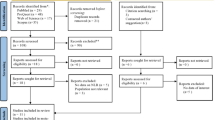Abstract
Neutrophil lymphocyte ratio (NLR) could be an important measure of systemic inflammation. There is a lack of knowledge about the neutrophil–lymphocyte ratio in rhinitis. We aimed to determine the relationship between the clinical parameters of allergic rhinitis and NLR in children. 438 children who were diagnosed with allergic rhinitis and followed up in our hospital were included in the study. The control group included 180 control children with no evidence of allergic disease. The immunoglobulin E levels, skin prick tests and complete blood count were measured. Mean NLR was 1.77 ± 1.67 in the study group and 1.70 ± 1.65 in the control group. Mean NLR was significantly higher in children with allergic rhinitis compared to controls (p < 0.05). The patients with allergic rhinitis were grouped according to the severity of AR as Group I (mild group) and Group II (moderate/severe group). No statistically significant difference was present between groups in terms of gender, age, familial atopy, exposure to smoke, the presence of asthma and/or eczema, the percentage of eosinophil, serum IgE levels, number of positive sensitivity, and sensitivity to allergens (p > 0.05). However, NLR was significantly higher in the moderate/severe AR compared to mild AR (p < 0.05). Mean NLR was statistically higher in children with allergic rhinitis compared to the control group. In addition, elevated ratio is associated with the severity of allergic rhinitis in children. Neutrophil–lymphocyte can be used as an indicator of inflammation in allergic rhinitis. But further studies are needed in this issue.
Similar content being viewed by others
References
Bousquet J, Khaltaev N, Cruz AA et al (2008) Allergic Rhinitis and its Impact on Asthma (ARIA) 2008 update [in collaboration with the World Health Organization, GA(2)LEN and AllerGen]. Allergy 63(Suppl 86):S8–S160
Yıldırım YS, Apuhan T, Koçoğlu E, Simşek T, Kazaz H (2011) High sensitivity C-reactive protein levels in chronic rhinosinusitis and allergic rhinitis. Kulak Burun Bogaz Ihtis Derg. 21(5):266–269
Büyüköztürk S, Gelincik AA, Genç S, Koçak H, Oneriyidogan Y, Erden S, Dal M, Colakoglu B (2004) Acute phase reactants in allergic airway disease. Tohoku J Exp Med 204(3):209–213
Steiner I, Sobieska M, Pucher B, Grzegorowski M, Samborski W (2006) Examination of acute phase proteins concentrations in children with allergic rhinitis. Ann Acad Med Stetin 52(2):33–37
Yalcin AD, Gumuslu S, Parlak GE, Bisgin A, Yildiz M, Kargi A, Gorczynski RM (2012) Systemic levels of ceruloplasmin oxidase activity in allergic asthma and allergic rhinitis. Immunopharmacol Immunotoxicol 34(6):1047–1053
Sahan E, Polat S (2014) Neutrophil to lymphocyte ratio is associated with more extensive, severe and complex coronary artery disease and impaired myocardial perfusion. Turk Kardiyol Dern Ars. 42(4):415
Imtiaz F, Shafique K, Mirza SS, Ayoob Z, Vart P, Rao S (2012) Neutrophil lymphocyte ratio as a measure of systemic inflammation in prevalent chronic diseases in Asian population. Int Arch Med. 5(1):2
Uslu AU, Deveci K, Korkmaz S et al (2013) Is neutrophil/lymphocyte ratio associated with subclinical inflammation and amyloidosis in patients with familial Mediterranean fever? Biomed Res Int. 2013:185317
Biyik M, Ucar R, Solak Y et al (2013) Blood neutrophil-to-lymphocyte ratio independently predicts survival in patients with liver cirrhosis. Eur J Gastroenterol Hepatol 25(4):435–441
Kayadibi H, Sertoglu E, Uyanik M, Tapan S (2014) Neutrophil-lymphocyte ratio is useful for the prognosis of patients with hepatocellular carcinoma. World J Gastroenterol 20(28):9631–9632
Zhang XY, Simpson JL, Powell H et al (2014) Full blood count parameters for the detection of asthma inflammatory phenotypes. Clin Exp Allergy 44(9):1137–1145
Lavinskiene S, Jeroch J, Malakauskas K, Bajoriuniene I, Jackute J, Sakalauskas R (2012) Peripheral blood neutrophil activity during Dermatophagoides pteronyssinus-induced late-phase airwayinflammation in patients with allergic rhinitis and asthma. Inflammation. 35(4):1600–1609
Lanzkowsky P (2011) Hematological Reference Values. In: Lanzkowsky P (ed) Manuel of Pediatric Hematology and Oncology, 5th edn. Elsevier, San Diego, pp 969–994
Amulic B, Cazalet C, Hayes GL, Metzler KD, Zychlinsky A (2012) Neutrophil function: from mechanisms to disease. Annu Rev Immunol 30:459–489
Gelardi M, Incorvaia C, Fiorella ML, Petrone P, Quaranta N, Russo C, Puccinelli P, Dell’Albani I, Riario-Sforza GG, Cattaneo E, Passalacqua G, Frati F, Italian Academy of Nasal Cytology (2011) The clinical stage of allergic rhinitis is correlated to inflammation as detected by nasal cytology. Inflamm Allergy Drug Targets 10(6):472–476
Gelardi M, Peroni DG, Incorvaia C et al (2011) Seasonal changes in nasal cytology in mite-allergic patients. Inflamm Allergy Drug Targets 10(6):472–476
Pelikan Z (2013) Cytological changes in nasal secretions accompanying delayed nasal response to allergen challenge. Am J Rhinol Allergy. 27(5):345–353
Acknowledgments
The authors thank the fellows of pediatrics in Zeynep Kamil Woman and Children’s Diseases Training and Research Hospital for their help in the data collection of patients.
Author information
Authors and Affiliations
Corresponding author
Ethics declarations
Financial disclosures
None.
Conflict of interest
The authors declare that they have no conflict of interest.
Rights and permissions
About this article
Cite this article
Dogru, M., Evcimik, M.F. & Cirik, A.A. Is neutrophil–lymphocyte ratio associated with the severity of allergic rhinitis in children?. Eur Arch Otorhinolaryngol 273, 3175–3178 (2016). https://doi.org/10.1007/s00405-015-3819-y
Received:
Accepted:
Published:
Issue Date:
DOI: https://doi.org/10.1007/s00405-015-3819-y




